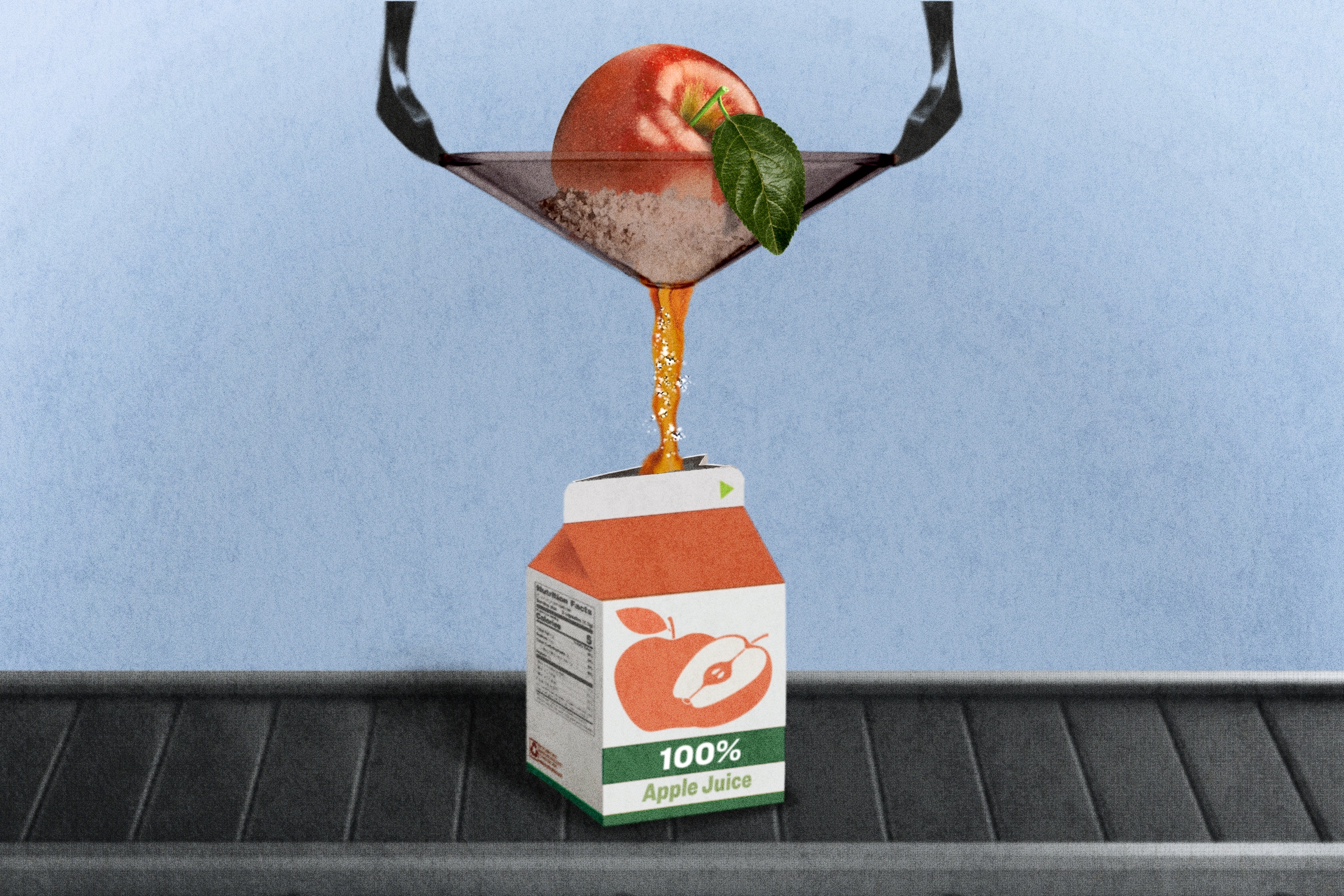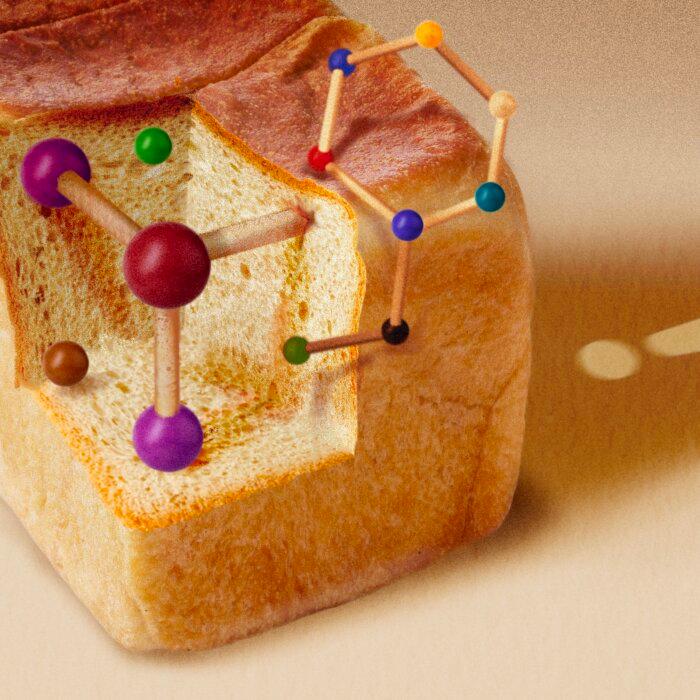The long list of unfamiliar names on ingredient labels of processed foods is already a cause for concern. However, many people are unaware of another category of additives never listed on these labels. These “invisible” additives are known as processing aids.
Processing aids serve various roles in food production. They can soak and wash ingredients, filter beverages such as wine or juice to make them clearer, or improve the texture of bread to make it softer and more elastic. During the production process, these aids are consumed, transformed, or removed, rendering them virtually undetectable in the final product.
Another example is regular milk supplemented with lactase, which becomes low-lactose milk, whereas adding rennet turns it into cheese. Additionally, applying palm wax to baking molds aids in easy cake release. Bottled sauces often have nitrogen added during bottling to displace oxygen, preventing oxidation and product spoilage.
Processing aids include a variety of substances used in food production, including clarifying agents, clouding agents, catalysts, flocculants, filter aids, and crystallization inhibitors. These aids perform essential functions such as improving texture, enhancing clarity, and preventing spoilage.
Martin Bucknavage, a senior food safety specialist at Penn State University’s Department of Food Science, told The Epoch Times there is no need for excessive concern. Another expert, Tim Bowser, the food process engineer at the Robert M. Kerr Food and Agricultural Products Center at Oklahoma State University, echoed that sentiment with some caveats.
“There are risks in all processes; there are definitely potential side effects and negative aspects that need to be looked into,” Bowser, told The Epoch Times. Yet unlike additives, the nature of processing aids determines that “they do not have that ability to cheat” and are less likely to be used for deception and adulteration.
In real-life scenarios, “the residuals would be too low to detect,” Mr. Bowser said.
Alcohol, Juice, and Heavy Metals
Despite Germany’s stringent centuries-old laws governing beer production methods, routine analyses have uncovered a gradual increase in arsenic content in German beer, with diatomaceous earth being considered a potential source.Diatomaceous earth is commonly used to filter alcohol and beverages to increase their yield.

To test this hypothesis, researchers mixed diatomaceous earth with beer and analyzed the filtrate for trace metals, finding elevated levels of arsenic and aluminum.
Diatomaceous earth is a fossilized sedimentary deposit formed from the cell walls of ancient diatoms that settled on the ocean floor. After extraction, it is ground into a powder and primarily composed of silicon dioxide.
Hidden Concerns of Decaffeinated Coffee
A processing aid called methylene chloride is employed to remove caffeine from coffee beans, producing decaffeinated coffee.
While methylene chloride’s high volatility generally facilitates the removal of its residues, they can still persist, and residues in some products may be relatively high.
Considering that decaffeinated coffee is a preferred choice for sensitive groups such as pregnant women, people with cardiovascular diseases, and those with neurological conditions, some people have raised concerns about the use of methylene chloride in its production.
“Anything that’s used like that, that is known to be [a problem] should be continuously looked at,” Mr. Bowser said when discussing the use of methylene chloride in the production of decaffeinated coffee. He emphasized that if a substance is deemed hazardous, it remains dangerous, regardless of the residual amount.
Hexane and Vegetable Oil
Traditional mechanical pressing methods for extracting vegetable oil typically achieve extraction rates ranging from 60 to 80 percent for oilseed crops. In contrast, chemical solvent extraction, which is now predominantly used, can achieve rates close to 100 percent.Hexane, a commonly used solvent in this process, is a hydrocarbon extracted from crude oil. It remains liquid at room temperature but is highly volatile.

In the extraction of vegetable oils such as canola, sunflower, and cottonseed using the hexane extraction method, the oilseeds undergo cleaning, crushing, steaming, and drying before being immersed in hexane. Following the principle of “like dissolves like,” lipids from the seeds are released, while hexane is subsequently evaporated using hot steam. The extracted oil then undergoes further refining processes, while hexane is collected and reused.
Hexane is also employed in the extraction of flavors, color additives, and other bioactive ingredients in addition to vegetable oils.
The FDA currently has no regulations regarding hexane residue levels in edible oil products. “To ensure that vegetable oil is sufficiently purified to minimize levels of contaminants like hexane, manufacturers may set a limit that only allows for trace amounts of hexane in the final product,” the FDA spokesperson told The Epoch Times. “The FDA does not typically sample vegetable oils for residual hexane. ... Based on the information that we have, any residual levels would be very low, if detectable if added to food.”
Enzymes in Bread: A Seemingly Harmless Aid
There is another major category of processing aids: enzymes, widely utilized in baking products such as bread.Xylanases have been employed in baking for several decades. They degrade polysaccharides in flour, resulting in fluffier bread. Proteases break down large protein molecules in the dough into smaller ones, making the dough softer and more malleable. They also expedite dough fermentation, enhancing the texture and flavor of bread. Additionally, by breaking down more proteins into amino acids, proteases enrich the nutritional value of bread and facilitate absorption. Alpha-amylase (α-amylase) breaks down starch in the dough into sugars, improving the softness, elasticity, and sweetness of the bread. Additionally, it reduces moisture content in bread and regulates microbial growth, thereby extending its shelf life.

Compared to other additives, enzymes used as processing aids have not been found to pose noticeable risks.
“We eat active enzymes in food every day,” Mr. Bucknavage said, noting that fresh fruits and vegetables naturally contain enzymes. Among them, α-amylase is produced by microorganisms, plants, and animals, and “our bodies produce α-amylases to break down starches we eat.”
“It [an enzyme] is not anything that could possibly be harmful,” Mr. Bowser said, emphasizing that during processing and heating, these enzymes are either cooked or deactivated. “It is still there, but it is just a simple sugar or a seemingly simple protein.”
Mr. Bowser added that listing these enzymes on ingredient labels is meaningless and perhaps even inappropriate, as they no longer exist in their active form.
Additionally, the amount of enzymes added is minimal. Mr. Bowser gave the example of phospholipase, an enzyme that breaks down certain components in flour into glycerol and fatty acids, stabilizing the dough and improving the texture of the bread. For each ton of flour, only 1 to 20 grams of phospholipase are needed.
Unlikely to Be Misused
There are potentially safer and more traditional alternatives to processing aids.Food processing aids are meant only to assist in production and have no other purpose, Mr. Bucknavage said. Adding too much can cause problems. He likened it to making fried eggs: A thin layer of oil in the frying pan is sufficient, but using too much oil would not result in a well-cooked, tasty dish.
Mr. Bucknavage stated that the quality of processing aids is determined by their manufacturers. Food processors then select products based on cost and functionality, ensuring they comply with safety standards and receive the necessary approvals.
In the United States, a three-tier regulatory framework oversees processing aids. Firstly, food manufacturing companies conduct inspections of the processing aids and their production processes. Secondly, major food processing firms and most retailers supplying large chain stores, such as Walmart or Costco, must obtain certification from third-party organizations before their products can be shelved. The third tier involves government regulatory bodies, specifically the U.S. Department of Agriculture (USDA) and FDA. Additionally, local health inspections at the county or city level further ensure compliance. Mr. Bowser highlighted that the USDA continuously monitors residues of sanitizing processing aids in meat products.
“There is no history of misuse of processing aids, at least that I am aware of,” Mr. Bucknavage stated. However, he acknowledged that these substances have been the subject of controversy.
Nonetheless, there are potentially safer and more traditional alternatives to processing aids, such as using mechanical pressing methods for extracting vegetable oils instead of hexane.
For decaffeinating coffee, “they should be looking at just a water extraction—water is obviously really safe,” Mr. Bowser suggested. These products are already available on the market. He pointed out that for producers in the low-caffeine coffee industry, this transition may not necessarily lead to economic losses. On the contrary, as consumers actively choose safer options, it can boost company profits.





